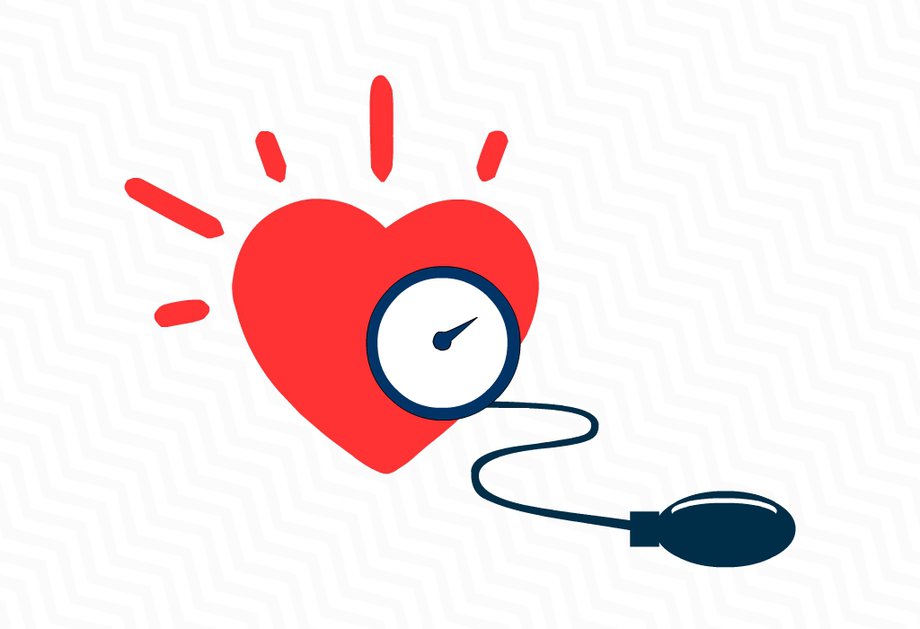What Is Secondary Hypertension And Its Underlying Causes?

Secondary hypertension is a medical condition characterized by persistently elevated blood pressure that is caused by an underlying health issue or medication. Unlike primary hypertension, which has no identifiable cause, secondary hypertension can be attributed to specific conditions such as kidney disease, hormonal disorders, certain medications, cardiovascular conditions, sleep apnea, and pregnancy-related factors.
This article aims to provide a comprehensive overview of secondary hypertension and its underlying causes. By exploring the various factors that contribute to secondary hypertension, this article seeks to enhance understanding of the condition and enable more effective diagnosis and management.
The objective and impersonal approach taken in this article ensures that the information presented is based on scientific evidence and avoids personal bias. By eliminating personal pronouns, the focus remains on the subject matter, fostering a neutral tone that is suitable for academic discourse.
Key Takeaways
- Secondary hypertension can be caused by a variety of underlying conditions such as kidney disease, hormonal disorders, adrenal gland disorders, thyroid disorders, coarctation of the aorta, sleep apnea, drug use (cocaine), alcohol abuse, chronic kidney disease, obstructive sleep apnea, primary aldosteronism, Cushing’s syndrome, hyperthyroidism, pheochromocytoma, and renovascular disease.
- Managing secondary hypertension requires a comprehensive approach that targets the underlying conditions contributing to high blood pressure.
- Lifestyle modifications, including a healthy diet, regular exercise, weight loss, and low sodium and saturated fat intake, are important in managing secondary hypertension.
- Regular monitoring of blood pressure and collaboration between healthcare professionals are necessary for the long-term sustainability of lifestyle modifications and overall improvement of health beyond blood pressure control.
Overview of Secondary Hypertension
An examination of secondary hypertension provides an informative understanding of the various underlying causes associated with this condition.
Secondary hypertension refers to high blood pressure that is caused by an underlying medical condition or medication. Unlike primary hypertension, which has no known cause, secondary hypertension has identifiable causes and risk factors.
Some common causes of secondary hypertension include kidney disease, hormonal disorders such as hyperaldosteronism or Cushing’s syndrome, certain medications like nonsteroidal anti-inflammatory drugs (NSAIDs) and oral contraceptives, and sleep apnea.
Other risk factors for secondary hypertension include obesity, excessive alcohol consumption, smoking, and a family history of the condition.
By identifying and addressing these underlying causes and risk factors, healthcare professionals can effectively manage and treat secondary hypertension.
Kidney Disease and Secondary Hypertension
Kidney disease has been identified as a significant contributor to the development of high blood pressure. In fact, it is estimated that approximately 5-10% of cases of hypertension are caused by kidney disease. The relationship between kidney disease and hypertension is complex and bidirectional. On one hand, kidney disease can lead to hypertension due to impaired regulation of salt and water balance, activation of the renin-angiotensin-aldosterone system, and increased sympathetic nervous system activity. On the other hand, hypertension can also cause kidney damage by exerting excessive pressure on the blood vessels within the kidneys. Risk factors for secondary hypertension related to kidney disease include chronic kidney disease, polycystic kidney disease, renal artery stenosis, and glomerulonephritis. Understanding and addressing the underlying causes of kidney disease in hypertensive patients is crucial for effective management of secondary hypertension.
| Risk Factors for Secondary Hypertension |
|---|
| Chronic kidney disease |
| Polycystic kidney disease |
| Renal artery stenosis |
| Glomerulonephritis |
Hormonal Disorders and Secondary Hypertension
Hormonal disorders play a significant role in the development of high blood pressure, eliciting a deep concern for individuals affected by this condition. Hormonal imbalances, often caused by endocrine disorders, can disrupt the delicate balance of hormones in the body, leading to an increase in blood pressure.
Several hormonal disorders have been linked to secondary hypertension, including:
- Cushing’s syndrome: Excessive production of cortisol, a hormone involved in regulating blood pressure, can lead to hypertension.
- Primary aldosteronism: An overproduction of aldosterone, a hormone that regulates sodium and potassium levels, can result in increased blood pressure.
- Pheochromocytoma: This rare tumor in the adrenal glands causes an excess release of adrenaline and noradrenaline, which can elevate blood pressure.
Understanding the interplay between hormonal imbalances and secondary hypertension is crucial for effective diagnosis and treatment of this condition. Further research is needed to explore the intricate mechanisms underlying these hormonal disorders and their impact on blood pressure regulation.
Medications and Secondary Hypertension
Medications can significantly contribute to the development and exacerbation of high blood pressure, highlighting the importance of understanding their impact on blood pressure regulation.
Certain medications, such as nonsteroidal anti-inflammatory drugs (NSAIDs), decongestants, and oral contraceptives, have been associated with secondary hypertension. These medications may increase blood pressure by affecting the renin-angiotensin-aldosterone system, altering fluid balance, or causing vasoconstriction.
Additionally, some medications used to treat other medical conditions, such as corticosteroids and immunosuppressants, can also contribute to the development of secondary hypertension.
It is crucial for healthcare providers to be aware of these potential side effects and closely monitor blood pressure in patients taking these medications. In cases where medications are found to be the cause of secondary hypertension, alternative treatment options should be explored to effectively manage blood pressure while minimizing the risk of adverse effects.
Cardiovascular Conditions and Secondary Hypertension
Cardiovascular conditions, such as heart disease and atherosclerosis, can significantly contribute to the development of high blood pressure by impairing the normal functioning of the circulatory system. These conditions often lead to secondary hypertension, where high blood pressure is a symptom rather than a primary condition. The presence of cardiovascular risk factors, such as obesity, smoking, and high cholesterol levels, further exacerbates the development of secondary hypertension. However, lifestyle modifications can play a crucial role in managing and preventing this condition. By adopting a healthy diet, engaging in regular physical activity, and quitting smoking, individuals can reduce their risk of developing secondary hypertension. Additionally, managing other cardiovascular conditions through appropriate medical interventions and medications can also help control blood pressure levels.
The following table provides a summary of common cardiovascular risk factors and suggested lifestyle modifications:
| Cardiovascular Risk Factors | Lifestyle Modifications |
|---|---|
| Obesity | Healthy diet, exercise |
| Smoking | Smoking cessation |
| High cholesterol levels | Healthy diet, exercise |
Sleep Apnea and Secondary Hypertension
Sleep apnea, a condition where breathing is repeatedly interrupted during sleep, has been linked to the development of high blood pressure. Obesity is known to be a major risk factor for sleep apnea, and its effects on this condition can contribute to the development of secondary hypertension. Obesity can lead to the narrowing of the upper airway, which can result in the collapse of the airway during sleep, causing breathing interruptions.
These interruptions can trigger various physiological responses, including increased sympathetic activity and oxidative stress, which can ultimately lead to elevated blood pressure. Additionally, sleep apnea can also contribute to the development of cardiovascular disease, as it is associated with increased inflammation, endothelial dysfunction, and dyslipidemia.
Therefore, the relationship between sleep apnea, obesity, and cardiovascular health plays a significant role in the development of secondary hypertension.
Pregnancy-Related Hypertension
Pregnancy-related hypertension, a condition characterized by high blood pressure during pregnancy, poses significant risks to both the mother and the unborn baby. This condition can manifest as either gestational hypertension or preeclampsia.
Gestational hypertension refers to the occurrence of high blood pressure after the 20th week of pregnancy, without the presence of protein in the urine.
On the other hand, preeclampsia is a more severe form of pregnancy-related hypertension, characterized by the presence of both high blood pressure and proteinuria. It can lead to complications such as organ damage, fetal growth restriction, and preterm birth. Additionally, preeclampsia increases the risk of maternal complications, including stroke and placental abruption.
It is crucial for pregnant women to receive regular prenatal care to monitor and manage pregnancy-related hypertension effectively.
Treatment and Management of Secondary Hypertension
The effective treatment and management of secondary hypertension require a comprehensive approach that targets the underlying conditions contributing to elevated blood pressure.
Lifestyle modifications play a crucial role in managing secondary hypertension. Implementing a healthy diet and regular exercise routine can significantly reduce blood pressure levels. A diet high in fruits, vegetables, whole grains, and low in sodium and saturated fats is recommended. Regular physical activity, such as aerobic exercises and strength training, helps lower blood pressure by improving heart health and reducing stress. Additionally, weight loss is often encouraged for individuals who are overweight or obese, as it can lead to a significant decrease in blood pressure.
Lifestyle modifications should be implemented alongside other treatment options, such as medication, to effectively manage secondary hypertension.
Frequently Asked Questions
What are the symptoms of secondary hypertension?
Symptoms of secondary hypertension include headaches, blurred vision, chest pain, shortness of breath, and nosebleeds. Treatment options for secondary hypertension may include medications such as diuretics and ACE inhibitors, while lifestyle changes like weight loss and reducing sodium intake can also help manage the condition.
How is secondary hypertension diagnosed?
Diagnosing secondary hypertension involves assessing medical history, performing physical examinations, and conducting laboratory tests. Identifying the underlying causes, such as renal disease or endocrine disorders, is essential for effective management of secondary hypertension.
Can secondary hypertension be prevented?
Prevention strategies for secondary hypertension involve lifestyle modifications such as maintaining a healthy weight, engaging in regular physical activity, consuming a balanced diet, limiting alcohol intake, avoiding tobacco use, and managing stress levels.
Are there any specific risk factors for developing secondary hypertension?
Specific risk factors for developing secondary hypertension include certain medical conditions such as kidney disease, hormonal disorders, and obstructive sleep apnea. Treatment options for secondary hypertension depend on addressing the underlying cause.
Is secondary hypertension a lifelong condition?
Secondary hypertension is not curable and is considered a lifelong condition. However, it can be managed effectively with appropriate treatment. Treatment options for secondary hypertension depend on the underlying cause and may include medication, lifestyle modifications, and addressing the primary condition.









